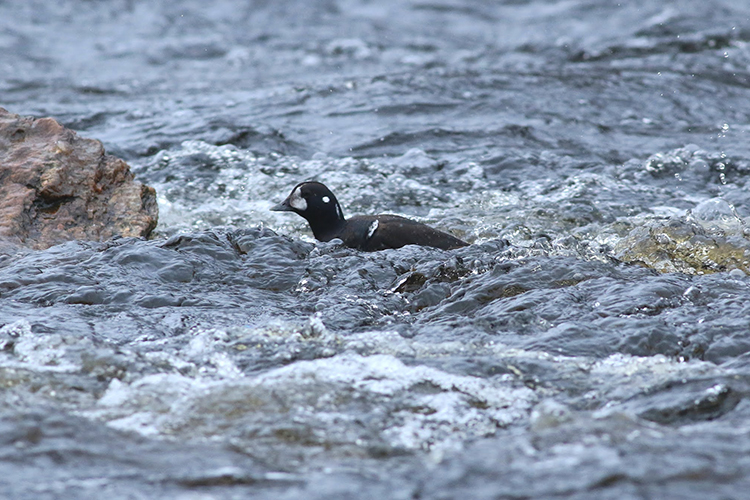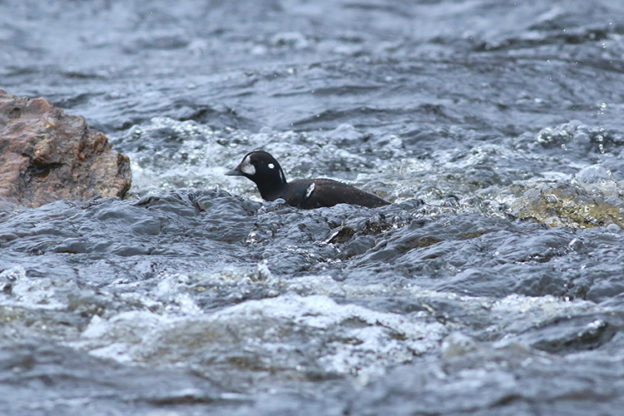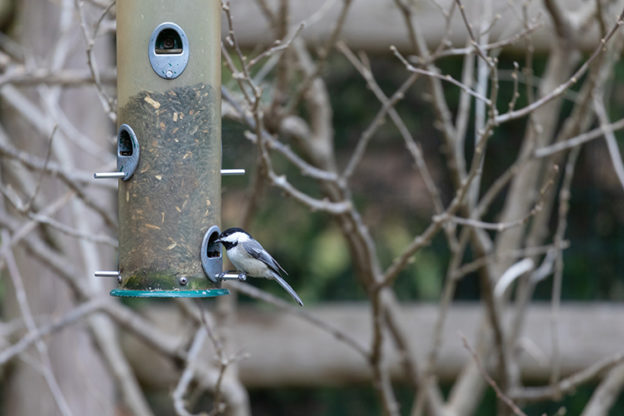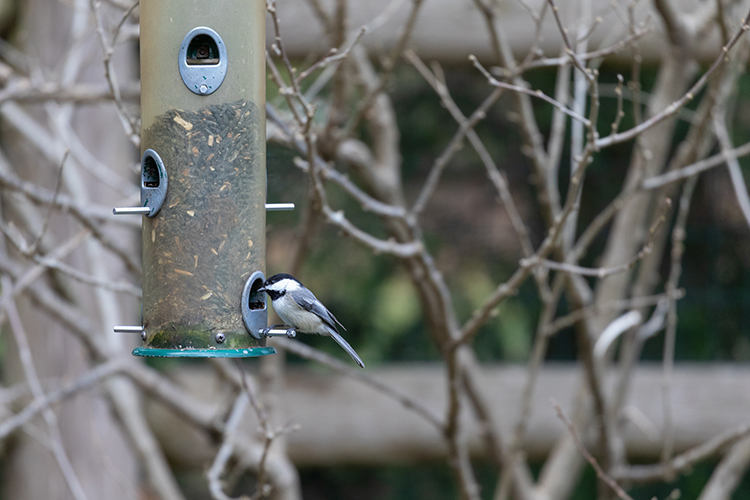Harlequin Ducks may not be the rarest ocean-going duck in Massachusetts, but they require a more specific habitat than any other kind of waterfowl: rocky, jagged coastlines with rough surf and abundant shellfish.
In fact, according to eBird, nobody had ever documented Harlequin Ducks more than a couple of miles inland in Massachusetts—until New Year’s Day 2021 when a local birder found a first-year male Harlequin on the fast-flowing Millers River in Turner’s Falls, MA, more than 120 miles away from the coast.

Powerful Rivers are Western Harlequins’ Summer Home
While it’s surprising to see this duck inland in Massachusetts, Harlequins in other parts of the country actually spend half of their lives on fresh water. In the Rocky Mountains and the Cascades of the West, these patchily-distributed ducks breed in fast flowing, whitewater rivers.
The Millers River is well-known among paddlers for its fast current and rough stretches. Not many rivers in Massachusetts have the wide expanses of rapids that Harlequins prefer, making the Millers a likely candidate for our first inland record of this species.
Even Wandering Birds Follow Habitat Guidelines
This sighting is a great example of how rigidly habitat preferences govern where birds are found, even in cases when birds show up in unusual geographic regions.
Most vagrant birds (that is, birds outside of their normal range) also stick to their usual habitats, or the closest thing they can find. Massachusetts’ last sighting of a Tropical Kingbird, for example, showed up in the brushy fields of Rock Meadow in Belmont—a fair local approximation of the low plains a prefers in the extreme Southwest.
And, true to its name, a Barn Owl that strayed farther north than normal was spotted taking shelter in the rafters of a high-ceilinged wooden garage in Lexington.
Stay in the Know
If you’re interested in following along with the latest unusual sightings, check out our weekly rare bird reports!




